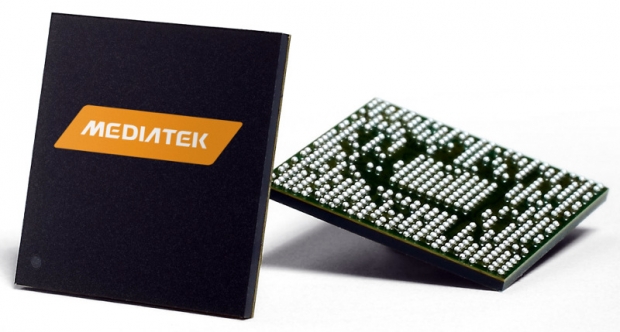In desktops and notebooks it is hard to find an eight core, but apparently even your mainstream mobile phone will end up with eight small ARM cores.
MediaTek's new MT6753 features eight Cortex-A53 clocked between 1.3GHz and 1.5GHz and the SoC is powered by Mali-T720 graphics. The chip supports 1080p display, cameras up to 16 megapixels, dual-band WiFi, Bluetooth 4.0 as well as LTE, FDD-LTE, WCDMA, T-SCDMA, GSM, CDMA1x, EVDO or CDMA. It is ready for almost any network.
Since the chip is based on the new A53 core, it means that it is a 64-bit part and will fight competitors such as Qualcomm in the mainstream market. Bear in mind that even mainstream mobile SoCs tend to offer decent performance nowadays, in relatively affordable phones. The chip is still 28nm, as using the 20nm node would probably be too expensive for a mainstream chip at this time.
Back in 2013 we examined the idea of using eight frugal ARM cores instead of four big ones or a big.LITTLE configuration. MediaTek was the first company to launch such parts and the seemingly strange design decision made a lot of sense.
MediaTek also has two quad-cores for entry 4G phones that should launch shortly - both are based on the A53 core. The faster one is the MT6735, with LTE and CDMA. It works at 1.5GHz and supports cameras up to 13 megapixels. The runner up clocks in at 1GHz and has LTE, 8-megapixel camera support and CDMA support.
The MediaTek MT6753 attacks the Snapdragon 615 SoC that has a similar specification (1.7 GHz quad-core Cortex-A53 and 1.0 GHz quad-core Cortex-A53, LTE and many important wireless radio technologies). The Snapdragon 615 supports 4G LTE World Mode CAT4, support for LTE FDD, LTE TDD, WCDMA (DC-HSPA+, DC-HSUPA), CDMA1x, EV-DO Rev. B, TD-SCDMA and GSM/EDGE; Bluetooth 4.0, Qualcomm VIVE 802.11ac NFC, GPS, GLONASS, BeiDou to name a few.
It looks like Snapdragon 615 has support for larger display resolutions including WQXGA 2560x1600, but we don’t think that there will be a mainstream phone with such a resolution anytime soon. The GPU of choice is the Adreno 405.
In the end, the MediaTek MT6753 will be a slower version of the already available MediaTek MT6752 SoC that runs at 1.7GHz, versus 1.5 GHz with MT6753. One noticeable difference is that the new MT6753 supports CDMA, something that you will need for China Unicom and its 295 million subscribers, 141 million who are on the faster 3G and 4G networks.




